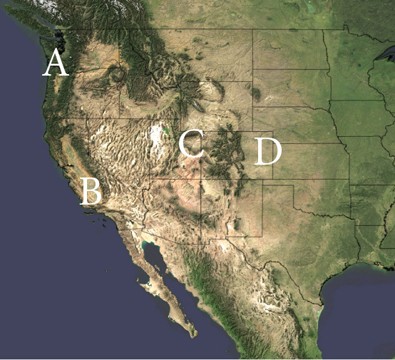Describe the characteristics of these successive stages of air mass thunderstorm formation and dissipation
What will be an ideal response?
Answer: Cumulus stage: The first stage of an air mass thunderstorm begins when unstable air begins to rise, often by the localized convection that occurs as some surfaces undergo more rapid heating than others. The rising air cools adiabatically to form fair-weather cumulus clouds. Mature stage: The mature stage of the air mass thunderstorm begins when precipitation—as heavy rain or possibly hail—starts to fall. As the falling rain or hail drags air toward the surface, downdrafts form in the areas of most intense precipitation. The mature stage marks the most vigorous episode of the thunderstorm, when precipitation, lightning, and thunder are most intense. Dissipating stage: As more and more of the cloud yields heavy precipitation, downdrafts occupy an increasing portion of the cloud base. When they occupy the entire base, the supply of additional water vapor is cut off and the storm enters its dissipative stage. Precipitation diminishes and the sky begins to clear as the remaining droplets evaporate.
You might also like to view...
ANT and NRT help us recognize the force and intensity that material objects have in the world
Indicate whether this statement is true or false.
Which of the following is NOT an example of subsidence?
a. submerged land in the Gulf of Alaska b. the low-lying areas of New Orleans c. Palace of Fine Arts, Mexico City d. Baytown, Texas e. The Leaning Tower of Pisa
What is a metamorphic zone? What will be an ideal response?
Which of the following locations has the greatest chance of experiencing Chinook winds?
A. A B. B C. C D. D